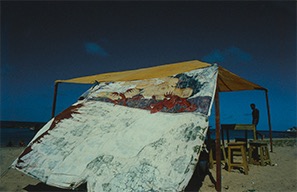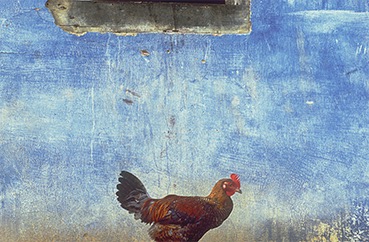
Is photography an excuse for traveling or do travels justify the addiction to photography? In its conventional prototype, the photographer is easily mistaken for the tourist: he visits someone else’s reality fully and swiftly uncommitted, granted by his/her camera’s eye. Falling amid the landscape, he soon puts himself to the task of solidifying it on polychromatic clichés, according to postcard-prescribed models. The space he treads constitutes a photographic theme in the same measure that it embodies the reason for such visit. And the more nature becomes a spectacle, the more tourism gets reduced to a parasitic supplement of the photographic film industry.
Is there anything more commonplace than a photo collection of the country’s Northern and Northeastern coastal shores? Photographer Arnaldo Pappalardo, however, accepts such fatality not so easily and reasons that clichés may be endowed with a nonconformist attitude against landscape trivialization. In order to prove so, he backpacked his Leica and once again walked all over the path traveled by mass tourism along two vacation months. He photographed, among others, beaches from Troncoso (Bahia State), Morro Branco (Ceará), Recife, Olinda and even Santos. He pointed his camera toward tourist photo stereotypes, such as soft drink stands, candy vendors, sailboats and fishermen and their nets. The results can be checked on this exhibit promoted by Masp.
The same hackneyed landscape which adorns recollection photo albums now reappears transubstantiated into strange apparitions. Pappalardo tries to de-automatize vision in order to make it delve into the form of things, free from the straightjacket of conventions. He frames his subjects in unexpected positions, crops them in disconcerting ways and makes up original arrangements regarding both frame surfaces as well as their depth. He has no scruples to bring to light the dematerialized stains of a vulture landing on a beach or a surfer falling off from his board, both blurred due to the low shutter speeds. He takes the best advantage from tropical lighting, building up flashy colored panels on nearly geometrical compositions.

Each photo truly constitutes a finding therefore, in terms of breaching conventional tourist photo expectations. These aim, as ever, to dismiss the spectacular character a landscape possesses, sometimes making use of a corrosive sense of humor, such as it happens when he so simply frames a hen in front of a blue wall background texture, or a dead fish on the sand, or yet an absurd Greek bust raising over the green tones of the tropical sea. The only caveat we could point out is his fixation to use natural lighting alone on takes by the shore: the high-noon sun casts shadows on people’s faces, causing their faces to become indistinguishable. A mere light reflector could have avoided such annoying effect without compromising scenes relaxation.
Psychology tells us that the world imposes itself upon our eyes according to established perception molds known as its “Prägnanz forms”. These forms are conventional structures which get fixed on our eyes in such an imperative way that only through the resistance placed by the observer can their imposition be defeated. Such invention does not consist in anything but an effort to win out over the Prägnanz forms of visible things, hence discovering new possible configurations in them. That’s exactly the greatest virtue of Pappalardo`s photos: they undertake as themes motifs which are extremely charged of perceptive molds so as to break their prominence soon afterwards by means of reinventing the beholding eye.


